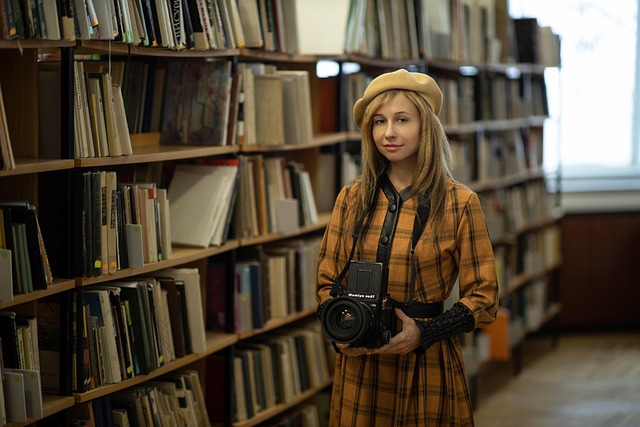In the past decade the entertainment landscape has shifted from traditional advertising to a more immersive, narrative‑driven approach. The term brand content—materials that build, promote, or represent a brand—has become a cornerstone of marketing in cinema, concerts, and festivals. By weaving brand stories into the very fabric of an event, companies now create emotional connections that transcend a simple product pitch.
The Rise of Brand Content in Live Events
Live events generate high‑impact moments that are perfect for storytelling. Unlike fleeting commercials, the energy of a live concert or a music festival provides an experiential canvas. Brands tap into this by crafting content that feels organic rather than intrusive. Here are a few ways this evolution manifests:
- Immersive Activation Zones: Dedicated spaces where fans interact with brand‑branded experiences—virtual reality booths, product sampling, and custom photo backdrops that become social media fodder.
- Co‑Created Music and Visuals: Artists collaborate with brands to release exclusive tracks or music videos, embedding brand messages within the creative output.
- Story‑Driven Merchandise: Limited‑edition items designed around a narrative that ties the brand to the artist’s persona and the event’s theme.
- Real‑Time Content Generation: Live‑streamed behind‑the‑scenes footage that showcases brand sponsorship while keeping the audience engaged.
Cinema: From Trailer to Theatrical Experience
The film industry has always leveraged brand partnerships, but the modern approach focuses on integrated storytelling across the entire cinematic lifecycle. A movie’s marketing campaign may feature a brand’s product as a character in a key scene, while a complementary short film or web series deepens the narrative. This synergy creates a seamless brand experience that feels part of the story rather than an ad.
For example, a beverage company might sponsor the production of a behind‑the‑scenes documentary that follows the cast during a crucial location shoot. The brand’s logo appears naturally on set, while the documentary’s script highlights the drink’s connection to the film’s themes of refreshment and freedom. Audiences watch the documentary on the studio’s own streaming platform, thereby extending the brand touchpoint beyond the cinema.
Beyond trailers, theaters are experimenting with branded intermission content—short clips that tease upcoming releases or highlight the sponsor’s latest product. These snippets often incorporate user‑generated content, turning viewers into active participants.
Music Festivals: Immersive Storytelling and Sponsorship
Case Study: Coachella
Coachella has become synonymous with experiential branding. The festival’s “Coachella 2024” edition featured a partnership with a major streaming service, creating an interactive app that delivered personalized itineraries, artist interviews, and exclusive brand‑curated playlists. The brand’s presence extended to on‑site activations—custom lounges, art installations, and limited‑edition merchandise.
“The festival’s atmosphere encourages storytelling that feels personal and authentic,” says a marketing executive who worked on the campaign. “When fans see the brand integrated into the event’s fabric, they’re more likely to develop a lasting affinity.”
The success of this approach lies in the festival’s inherent communal experience. By offering curated content that enhances the event’s narrative—such as themed playlists that match a stage’s musical style—a brand can embed itself into the festival’s emotional core.
Case Study: Tomorrowland
Tomorrowland’s partnership with an automotive company showcased the brand through a futuristic stage design that highlighted electric mobility. The stage’s LED walls displayed real‑time data from the brand’s vehicle sensors, turning the performance into an interactive showcase. Meanwhile, the brand’s social media channels streamed behind‑the‑scenes footage, inviting global fans to feel part of the on‑stage experience.
Concerts: The Symbiosis of Artists and Brands
Single‑artist concerts provide an intimate platform for brand content that can be woven directly into the setlist or visual backdrop. Here are key tactics that performers and sponsors employ:
- Setlist Integration: A brand might inspire a song’s lyrics or theme, creating a natural narrative thread that resonates with the audience.
- Stage Design Partnerships: Brands sponsor elaborate stage setups—LED walls, kinetic sculptures, or augmented reality overlays—that enhance the visual storytelling.
- Digital Live Streams: High‑definition broadcasts can incorporate brand overlays, sponsor mentions, and interactive polls that encourage viewer participation.
- Merch Bundles: Exclusive concert merchandise that includes a branded item—such as a limited‑edition water bottle—offers fans tangible memorabilia that doubles as a marketing asset.
These tactics go beyond mere logo placement; they transform a brand into a co‑author of the performance’s narrative, strengthening emotional resonance.
The Future Landscape: Digital Twins and Augmented Reality
As technology advances, the boundary between physical events and digital experiences blurs. Brands are experimenting with digital twins—virtual replicas of concert venues or festival stages that allow fans to experience the event from anywhere. These digital spaces can be heavily branded, offering users interactive product showcases and immersive storytelling.
Augmented reality (AR) is another frontier. By overlaying brand imagery onto real‑world elements—such as concert posters, stage lights, or festival pathways—companies can create memorable moments that fans share on social media. AR filters that transform a concert stage into a branded environment can also extend the brand’s reach into everyday life.
- Fan‑Generated AR Content: Encouraging attendees to create and share AR experiences tied to the brand.
- Virtual Meet‑and‑Greets: Fans can meet their favorite artists in a virtual space that is branded by a sponsor, fostering deeper engagement.
- Gamified Brand Challenges: Interactive AR scavenger hunts during festivals that reward participants with exclusive merchandise.
Conclusion: A Narrative‑Centric Shift in Entertainment Marketing
From cinema to concerts to music festivals, the shift toward brand content reflects a broader change in consumer expectations. Audiences now prefer experiences that feel authentic, story‑driven, and participatory. Brands that succeed are those that can embed themselves into the event’s narrative, creating moments that resonate long after the lights go out.
By leveraging immersive activations, integrated storytelling, and cutting‑edge technology, companies are not just advertising—they are co‑creating the cultural moments that define entertainment for the next generation. The result is a win‑win: fans receive richer experiences, and brands build deeper, more lasting connections with their audiences.


